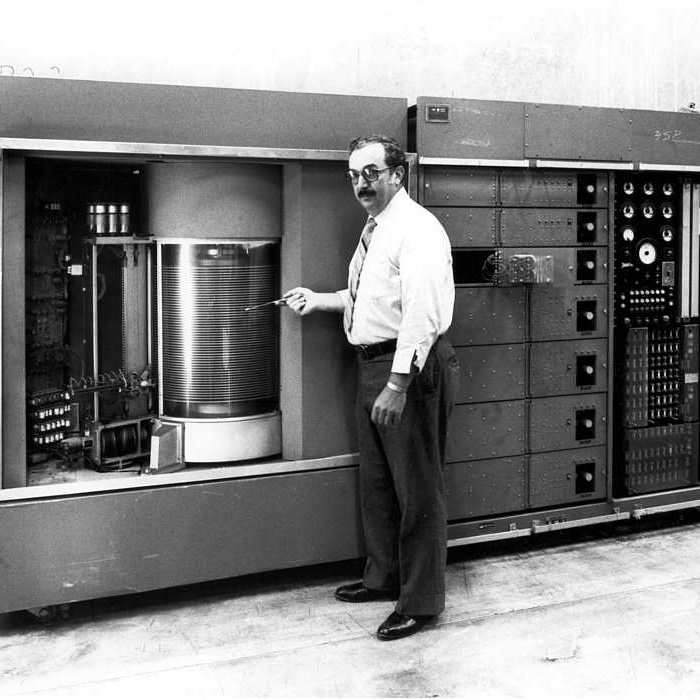Origins: The Database Icon

I’ve been creating an icon system this week for my company. One of the icons we need is for a database.
Doing a quick search on The Noun Project (or Google Images) reveals what you’ll get: a stack of cylinders.
If you’re old enough to remember the spinning disk drives that came before solid state hard drives, you’ll have a clue to the origin of the cylindric stack.
Go back a little farther to 1956 and you’ll hit the source.
Some specs on the 305 (via Wikipedia):
- one of the last vacuum tube computers that IBM built
- It weighed over a ton
- stored 5 million 7-bit (6 data bits plus 1 parity bit) alphanumeric characters (5 MB)
- it had fifty 24-inch-diameter (610 mm) disks.
- two independent access arms moved up and down to select a disk, and in and out to select a recording track, all under servo control
- Average time to locate a single record was 600 milliseconds
- the system was leased for $3,200 per month in 1957 dollars, equivalent to a purchase price of about $160,000
- more than 1,000 systems were built
- production ended in 1961
I continue to wonder about the future of icons. How long do we represent current technologies with iconic representations of things which no longer exist or that we rarely use?
Envelopes for email. Handsets from rotary telephones for (cellular) phones, magnifying glasses, physical bookmarks, point-and-shoot cameras, alarm clocks with two bells on top, paint brushes, block erasers, reel-to-reel tapes.